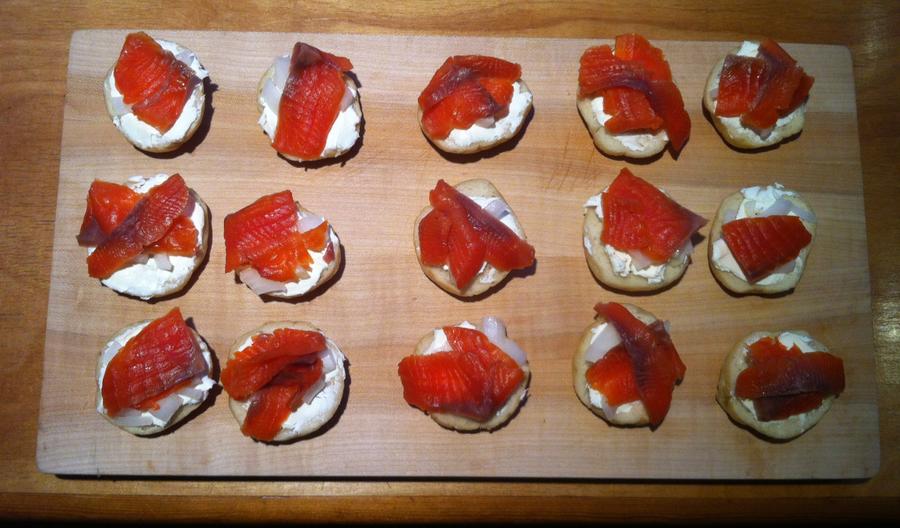The meat and fat on wild salmon, picks up the color of the food they are eating... The greyish meat, next to the skin, is a layer of fat that is high in Omega fatty acids... I'd eat it..
[h3]Feeding Ecology[/h3]
Since young pink salmon migrate immediately to the ocean, they generally do not eat as they leave freshwater. For the few populations that spawn much further up large rivers, young pink salmon may eat aquatic insects as they travel to saltwater. In the ocean, pink salmon feed on plankton, other smaller fish, squid, and the occasional aquatic insect. The tiny marine crustaceans pink salmon eat are what give their flesh its pink color. As with all members of the salmon family, when they return to freshwater to spawn, they stop eating.
So why is wild salmon a deeper red than farmed salmon?
Unlike beef, which acquires its distinct red hue from contact with oxygen in the air, salmon meat gains its color through the fish’s diet. Out in the ocean, salmon eat lots of small free-floating crustaceans, such as tiny shrimp. These crustaceans are filled with molecules called carotenoids, which show up as pigments all over the tree of life. In fact, if you’ve ever known a kid who
turned orange from eating too many carrots, you’ve seen carotenoids in action. It’s these carotenoids that account for the reddish color of the salmon, as well as the pink color of flamingoes and the red of a boiled lobster.
Farmed salmon, however, aren’t fed crustaceans. Instead, they eat dry pellets that look like dog food. According to the
Atlantic Canada Fish Farmers Association, salmon chow includes ingredients such as “soybean meal, corn gluten meal, canola meal, wheat gluten and poultry by-products.” Carotenoids, which are also essential for regular growth, can also be added to help give the fish its distinctive color.






